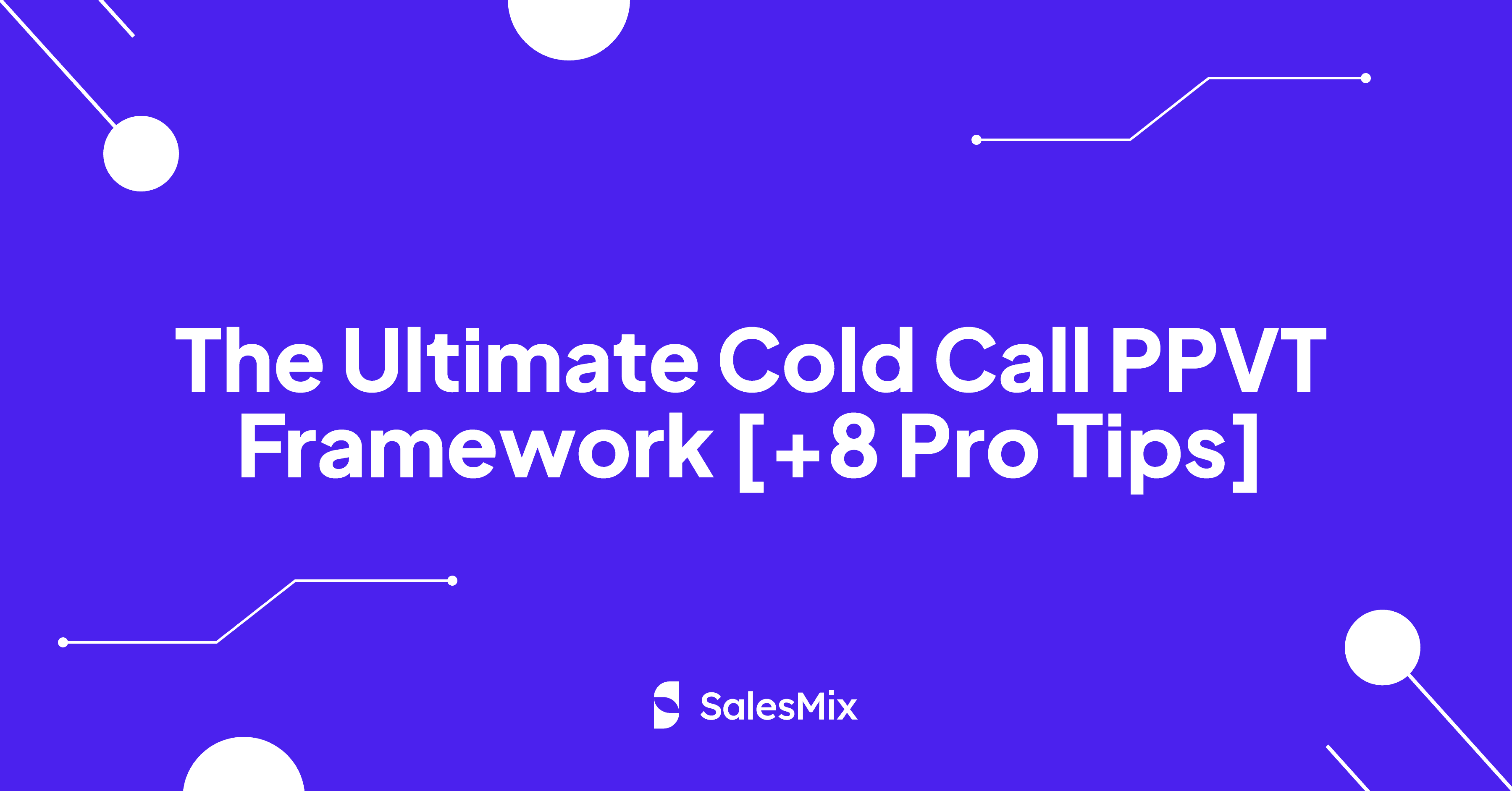Table Of Contents
How do you make cold calls that land a real conversation with the prospect but not a cutoff? The answer lies in having a solid cold call PPVT framework.
Look, we both know that most cold calls fail for the same reasons. They have vague intros and robotic scripts and fail to deliver value fast enough. You need to make the call feel personal by showing that you’ve done your homework.
A good cold call PPVT framework solves the issues of cold calling by focusing on four essential elements:
- Purpose
- Personalization
- Value, and
- Transition.
Cold calling is no longer about volume but precision. I will break down the Cold Call PPVT Framework in detail, plus eight tips from the experts to help you refine your approach and book more meetings.
Step 1: Permission Opener (Confirmation)
The object here is to ensure that the prospect allows you to speak before you proceed with your pitch.
Script Example:
“Hi, [Name]? Hey, I’m [Your Name] calling from [Company]. You weren’t expecting my call, but if you allow me 20 seconds of your time, I can tell you the reason why I called you. If you don’t like it, we can hang up. I’ll be brief.”
Possible Scenarios
Positive Response: “Go ahead.”
Then, you can move to the next step.
Busy Prospect: “I can’t now.” Then, you should offer a brief hook like this to handle the cold call objection:
“Understood! Should I tell you at least the topic? If it’s relevant, I’ll call you back in two hours. I know you’ll like what you hear.”
Step 2: Pitch (Interest/Curiosity)
Understand how the prospect is currently solving the problem your product addresses. This step is about assumption-based validation. You need to suggest a pain point and confirm if it applies.
Show interest while the cold calls.
Script Example:
“Usually, when talking with [Job Title] like you, they are [Pain/Problem/Challenge]. Am I in the right direction?”
Possible Scenarios
Agreement: “Yes, we’re facing XYZ problem.”
You need to dig deeper by asking more questions to uncover additional pain points before moving to the next step.
Rejection: “No, we have that covered.”
You will need to adjust your approach. You can ask how they currently solve it or pivot to a different angle in the conversation.
Step 3: Value
You need to present the core problem your product solves in a way that resonates with the prospect.
Script Example:
“We help [Solve the Problem] in [Specific Way]. We achieved [Desired Outcome] with [Companies/Social Proof].”
Useful Tip:
Even if they raise objections, move to this step. Keep it brief, focused, and impactful.
Step 4: Tie-in & Close
Relate the value to the prospect’s specific situation and secure a follow-up meeting.
Script Example:
“Great, well [Name], based on what you’ve shared, it sounds like [Reiterate the Problem They Identified]. We helped [Case Study] overcome these exact challenges by [Explain How Your Product Solves It], leading to [Desired Outcome]. Curious—does this sound interesting to you?”
Step 5. Securing a Meeting
Remember, the goal is not to close the sale but to book a call with the prospect.
Script Example:
“I know you weren’t expecting my call, but would you be opposed to scheduling a quick 20-minute call to explore this further and see if there’s a potential fit? Would [Time & Day] work for you?”
8 Pro Tips You Can Adopt with Cold Call PPVT Framework
Let’s look at the proven 8 tactics to get better in cold calls and land more bookings.
Illustration for cold calling with cold call PPVT framework
1. Master Your Tone for Trust & Engagement
Your tone sets the mood of the call. You should aim for confident, warm, and slightly informal. Try to avoid robotic or overly enthusiastic delivery. Prospects respond better when you sound like a real person, not a sales script.
2. Slow Down Your Pace to Project Authority
Speaking too fast signals nervousness and inexperience. Slow down, leave small pauses, and control your rhythm. It makes you sound more knowledgeable and trustworthy while giving prospects time to absorb what you’re saying.
3. Balance Your Pitch by Being Neither Too High Nor Too Low
A high-pitched, bubbly tone can feel pushy, while a low, monotone delivery sounds disengaged. You should find a natural, balanced tone that keeps the prospect interested and comfortable.
4. Don’t Just Expect Rejection Rather Be Prepared for It
Objections are given. Instead of fearing them, embrace them as part of the process. The best cold callers anticipate objections, handle them smoothly, and pivot the conversation rather than shutting down.
5. Know Your Prospect’s Pain Points Inside Out
Prospects don’t care about your product. What do they care about? It is all about solving their own problems. If you can articulate their pain points better than they can, they’ll automatically see you as a valuable resource.
6. Shift Your Mindset: You’re Selling the Meeting, Not the Product
A cold call isn’t about closing the deal. It’s mostly about securing the next step with your prospect. Make the meeting sound like a natural continuation of the conversation, not a commitment they need to think about.
7. Go Deep, Not Wide
Avoid superficial, generic pitches in your cold calls. Instead of listing multiple problems you solve, you need to focus on one core issue and explore it thoroughly. When a prospect truly feels the pain, they’re more likely to take action.
8. Frame the Call as a Conversation, Not a Sales Pitch
The goal isn’t to bombard them with a rehearsed pitch but to start a dialogue. You need to make the prospects feel heard, engage with their responses, and guide them toward a solution instead of pushing a hard sell.
Conclusion
The days of mindless dialing and generic scripts are long gone. The only way to win now is through precision, personalization, and delivering value from the very first second. The cold call PPVT framework gives you the structure you need to turn calls into real conversations, not instant rejections.
The difference between a successful cold call and a failed one often comes down to execution. If you can control your tone, anticipate objections, and keep the conversation engaging, you’ll stand out in an inbox full of noise and calls that go nowhere.






